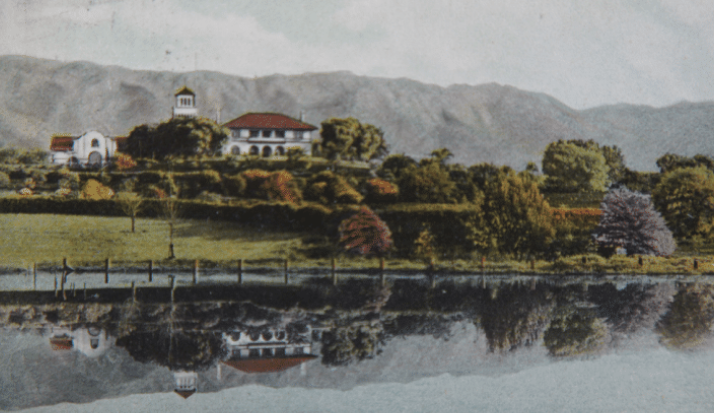Montecito was initially chosen as the site for the 10th California Mission in 1769 by Padre Junipero Serra. However, due to safety concerns caused by the presence of bears, wolves, Indian villages, and bandits, the mission was relocated closer to the Royal Presidio. The Spanish era saw a decline in payments to Royal Presidio soldiers, leading to the granting of free 50-acre parcels, from what is now known as Montecito, as an alternative form of compensation.
Before the arrival of the Spaniards, the local Indians utilized the hot springs in Montecito for their healing properties.In 1855, Wilber Curtiss, who was severely ill, discovered the springs and claimed the land, becoming the first American settler in the area. He built several hotels at the springs, but they were repeatedly destroyed by fires over the years.
The original mission site became the Carmelo Mission,which was later replaced by the magnificent Our Lady of Mount Carmel Church in 1936.

With the influence of American settlers like Wilber Curtiss, more people from the United States arrived in Montecito. Land prices rose, and nurseries, orange groves, and formal gardens began to flourish in the 1860s.
According to Montecito history, Notable individuals who arrived in Montecito during this time included William Eddy, who founded the Santa Barbara County National Bank in 1875, and Josiah Doulton, of the Chinaware family, who purchased oceanfront acres named “Ocean View,” which later became the Miramar Hotel. The region witnessed the development of a small American village centered around the Buell country store, known today as the Upper Village. Protestant and Presbyterian churches were established, and the Montecito community continued to grow.
Montecito Market Report
(June – July 2023)

In 1887, the Montecito stop on the Southern Pacific coastal route was established, bringing more visitors to the area. The post office and other amenities gradually moved to the nearby city of Santa Barbara. That same year, William Crocker and Caroline Sperry acquired Rancho Las Fuentes and cultivated citrus, establishing a large lemon packing plant that became the clubhouse for Birnam Wood.
The Gould brothers planted olive groves along Olive Mill Road, and in 1893,they constructed a stone olive mill. As train access made Santa Barbara a fashionable health resort, wealthy individuals like the Rockefellers, Carnegies, and DuPonts started building luxurious estates in Montecito. The area became known for its “migration of millionaires,” and prominent architects, like George Washington Smith, designed Spanish Revival, Italian marble palaces,Normandy castles, English manor houses, and Cape Cod colonials.
The Montecito community catered to both the wealthy and the working class,with dance halls, taverns, and other establishments serving as social hubs. The Santa Barbara Country Club, later transformed into the Montecito Country Club, provided recreational opportunities for the affluent, while middle-class residents enjoyed Montecito Hall and the Montecito Home Club.Tennis, golf, and polo were popular among the elite. However, the end of the super-wealthy era wound down with the introduction of income taxes in 1914.





